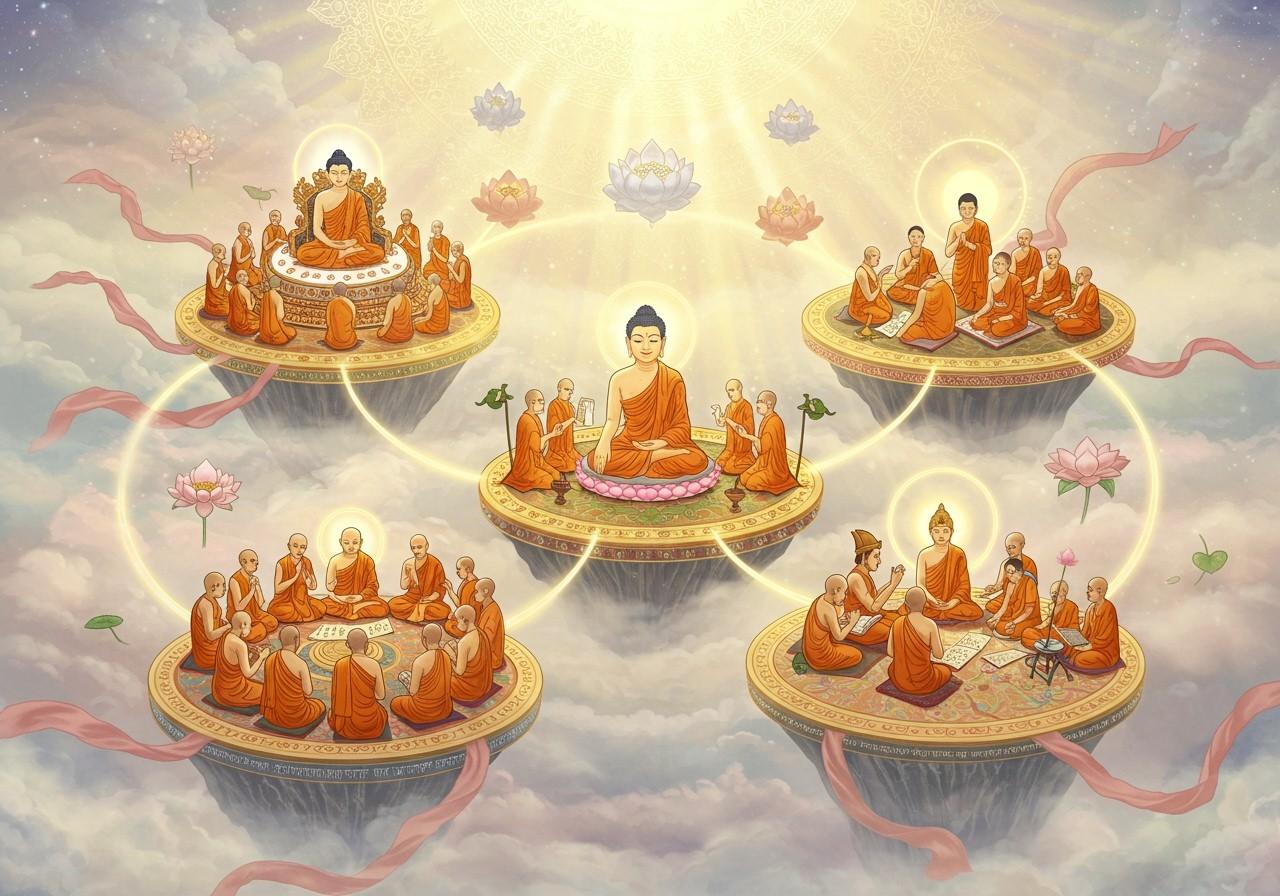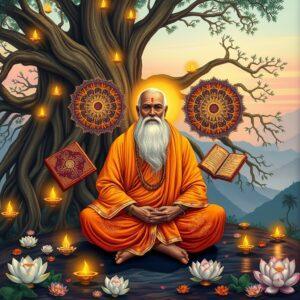
The Four Buddhist Councils are pivotal events in Buddhist history. These gatherings shaped the development and transmission of Buddha’s teachings, ensuring their preservation and interpretation across generations. This exploration delves into the historical context, locations, key decisions, and lasting impact of each council.
What are Buddhist Councils?
Buddhist councils are formal assemblies of monks and scholars convened to address doctrinal and disciplinary matters. They play a crucial role in maintaining the integrity of Buddhist teachings and practices. These councils involve reciting and codifying scriptures, resolving disputes, and adapting the Dharma to evolving circumstances. They are essential for ensuring the accurate transmission and interpretation of Buddha’s teachings.
The First Buddhist Council (c. 483 BCE)
Held shortly after the Buddha’s parinirvana (death) around 483 BCE in Rajgir (Rajagaha), India, under the patronage of King Ajatasatru. This council, led by Mahakassapa, aimed to preserve the Buddha’s teachings through oral recitation and compilation. Ananda recited the Sutta Pitaka (discourses), while Upali recited the Vinaya Pitaka (monastic rules). This meticulous process ensured the accurate transmission of the Dharma. This First Council laid the foundation for the Pali Canon, the foundational scriptures of Theravada Buddhism.
The Second Buddhist Council (c. 383 BCE)
Approximately a century later, around 383 BCE, the Second Buddhist Council convened in Vaishali, India. It addressed disagreements regarding monastic discipline and practices. A central issue was the acceptance of monetary donations by monks, a practice seen as deviating from the original teachings. Led by Yasa, the council reaffirmed stricter monastic rules. This led to a significant schism in the Sangha (Buddhist community), dividing it into the Sthaviras (Elders) and the Mahasanghikas (Great Community), marking an early branching in Buddhist lineages.
The Third Buddhist Council (c. 247 BCE)
The Third Buddhist Council took place around 247 BCE in Pataliputra (modern-day Patna), India, under the patronage of Emperor Ashoka. This council, led by Moggaliputta Tissa, focused on purifying the Sangha by addressing heretical views and consolidating the teachings. The Abhidharma Pitaka (philosophical treatises) was compiled during this council. This provided a systematic framework for Buddhist philosophy. Emperor Ashoka’s support led to the widespread propagation of Buddhism through missionary activities, extending its reach across various regions.
The Fourth Buddhist Council (c. 100 CE)
Around 100 CE, the Fourth Buddhist Council was held in Kashmir, India, under the patronage of the Kushan king Kanishka. This council played a crucial role in the development of Mahayana Buddhism. Led by Vasumitra and Asvaghosa, it sought to systematize Mahayana texts and reconcile different interpretations of the Dharma. The Vibhasha Shastra, a comprehensive commentary on the Tripitaka, was produced. This significantly impacted the development and spread of Mahayana thought, leading to the formal recognition of Mahayana as a distinct school of Buddhism.
Poojn.in: Supporting Your Spiritual Journey
Poojn.in, India’s leading online store for cultural and spiritual goods, offers a wide selection of items to support your Buddhist practice. Explore our collection of:
- Meditation Cushions and Mats: Enhance your meditation practice with comfortable and supportive cushions and mats, perfect for creating a serene space for reflection.
- Buddhist Prayer Beads (Mala): Find a beautiful mala to aid in your chanting and mindfulness practices, crafted from various materials with traditional designs.
- Buddha Statues: Bring serenity into your home with a sacred Buddha statue, available in various poses and sizes, representing different aspects of the Buddha’s teachings.
- Incense and Incense Holders: Create a calming atmosphere with natural incense and elegant holders, perfect for meditation and creating a sacred space.
Visit Poojn.in today to discover a wide range of products to support your spiritual journey.
Conclusion
The Four Buddhist Councils represent critical junctures in Buddhist history, shaping the development, preservation, and transmission of the Buddha’s teachings. These councils underscore the importance of community dialogue and adaptation in maintaining the integrity and relevance of spiritual traditions. By understanding these historical events, we gain valuable insights into the evolution of Buddhist thought and practice, fostering a deeper appreciation for the enduring legacy of the Dharma.
For further exploration of Buddhist history and culture, consider these related posts:
- Leaning Temple of Huma: History, Architecture, and Mystery
- Odisha’s Sacred Sites: A Journey Through Spirituality and History
- Badami Cave Temples: Chalukya Dynasty Architecture


